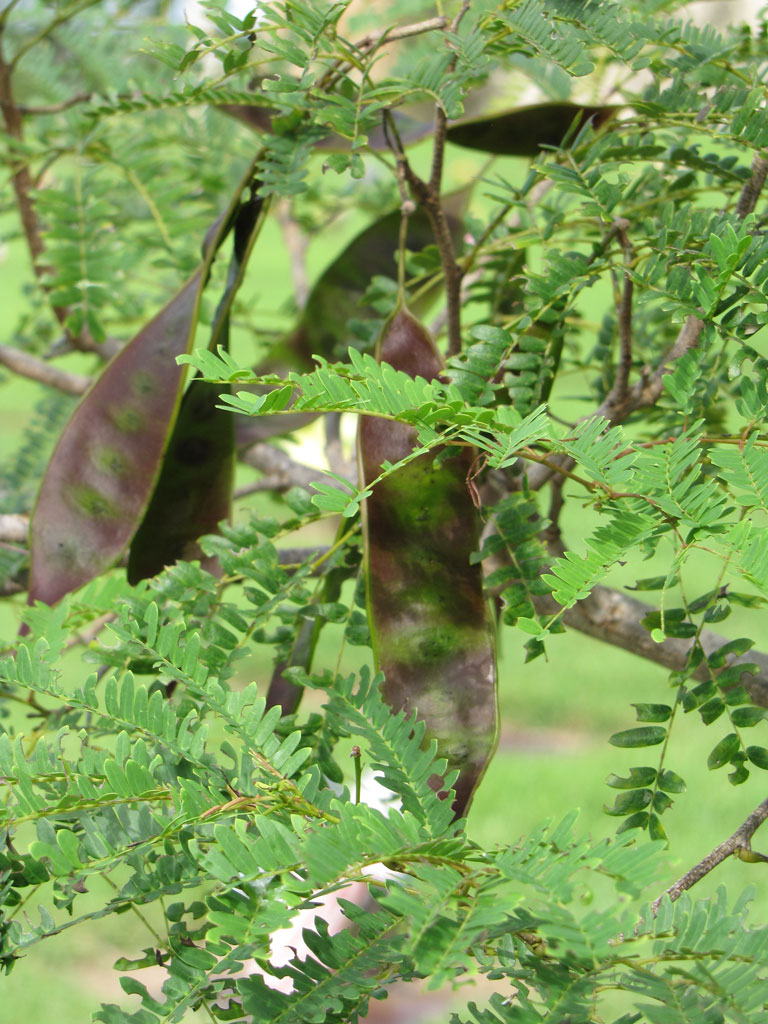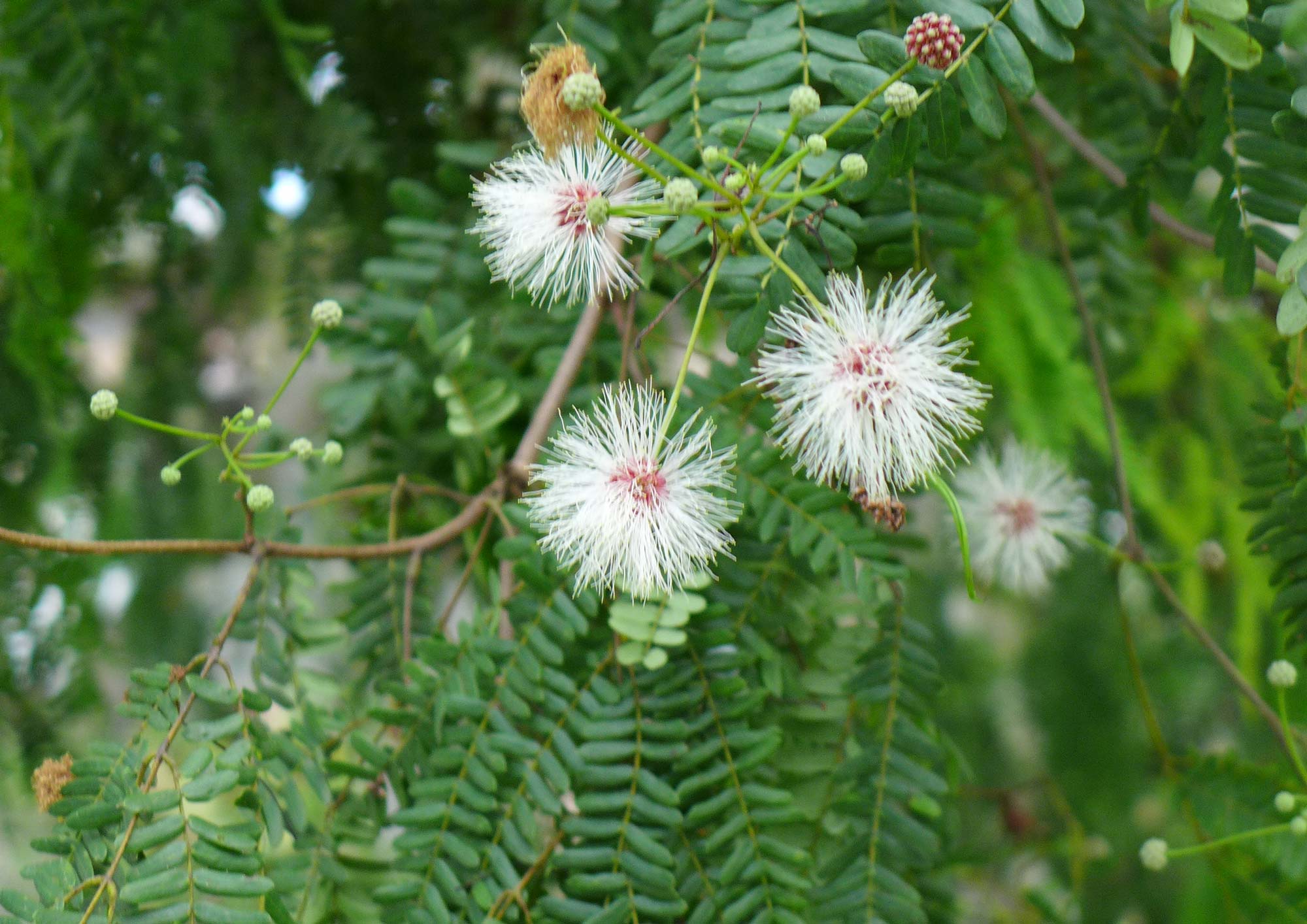False tamarind
Pictured above: False tamarind (Lysiloma latisiliquum) by Scott Zona (CC BY-NC 2.0). Click on terms for botanical definitions. View post as a PDF.
False tamarind is a semi-deciduous tree that occurs naturally in rockland and coastal hammocks in South Florida. It typically blooms spring through fall, but may bloom as early as late winter. Its fragrant flowers provide nectar for butterflies and moths. The plant is a larval host for the Mimosa yellow, Cassius blue and Orange sulphur butterflies. It provides food and cover for birds and other small wildlife, and habitat for a variety of snails.
Each pompom-like inflorescence is made up of many inconspicuous flowers that form a ½- to 1-inch globe. Most visible are the prominent white to whitish-green stamens that give this flower its distinctive appearance. Flowerheads are born on long stalks that emerge from leaf axils. Leaves are bipinnately compound, and composed of ½-inch long leaflets, giving a feather-like appearance. Leaflets are obovate with entire margins. Leaf arrangement is alternate. Trunks are stout and may reach up to 3 feet in diameter. In younger trees, the bark is smooth and light gray; it darkens and peels off in plate-like scales as the tree ages. Seeds are shiny, dark brown and born in flattened, papery pods that turn black when mature.

Photo by Forest & Kim Starr (CC BY 2.0)
Family: Fabaceae (Legume, bean or pea family)
Native range: Indian River, Lee, Collier, Monroe and Miami-Dade counties, and the Keys
To see where natural populations of Orange milkwort have been vouchered, visit florida.plantatlas.usf.edu.
Hardiness: Zones 10A–11
Lifespan: Perennial
Soil: Moist, well-drained sandy, clay, loamy or calcareous soils
Exposure: Full sun to minimal shade
Growth habit: 30–80’ tall with broad, flattened crown
Propagation: Seed
Garden tips: False tamarind is long lived, hardy and relatively fast growing. In the right conditions, it is relatively maintenance free. In South Florida, it works well as a shade tree. It is generally evergreen, but may become deciduous at the northern end of its range. It is drought and salt tolerant, but does not tolerate cold. The plant is easy to establish from seed.
Plants are occasionally available from nurseries that specialize in Florida native plants. Visit www.PlantRealFlorida.org to find a nursery in your area.

